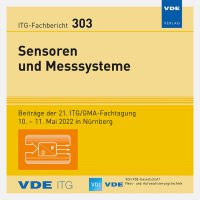Pd based MEMS Hydrogen Sensors
Konferenz: Sensoren und Messsysteme - 21. ITG/GMA-Fachtagung
10.05.2022 - 11.05.2022 in Nürnberg
Tagungsband: ITG-Fb. 303: Sensoren und Messsysteme
Seiten: 6Sprache: EnglischTyp: PDF
Autoren:
Wienecke, Marion (Hochschule Wismar, Institut für Oberflächen- und Dünnschichttechnik, Wismar, Germany)
Lengert, Maren; Weidner, Michael; Ciudin, Rodica; Heeg, Jan (Materion GmbH, Wismar, Germany)
Frank, Thomas (CiS Forschungsinstitut für Mikrosensorik GmbH, Erfurt, Germany)
Kienke, Peter (Union Instruments GmbH, Lübeck, Germany)
Inhalt:
Pd-based thin film hydrogen sensors are available on the market since several years. They run due to different physically switching mechanisms, such as optical switching, changing resistance or capacity of thin film structures. This article describes the capabilities of a new sensor based on a micro-electromechanical system (MEMS). These sensors utilise the volume change of Pd due to hydrogenation, thus they switch mechanically. Pd and Pd-alloy ultrathin films have been deposited on the membrane of Si-MEMS chips by magnetron sputtering. Our investigations revealed a reversible switching of MEMS-Pd-sensors without any drift. The sensor shows a fast response for hydrogen concentrations at and below the lower explosion limits up to 100%vol. hydrogen. Thus, the Pd-MEMS gas sensor fulfil the requirements of ISO 26142 for control and explosion protection of stationary facilities. For hydrogen concentrations between 1% vol. and 100% vol, the t90 response time is about 5 s. Besides this, Pd based sensors show low cross sensitivities and particularly no cross sensitivity to methane (CH4) since the switching mechanism is a physical one. This type of MEMS sensor has low power consumption, is miniaturised and can be produced in a mass production at low costs by silicon technology.


